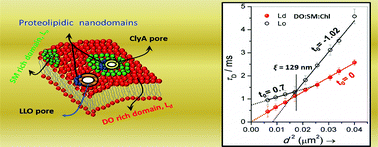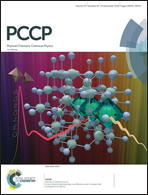Pathways for creation and annihilation of nanoscale biomembrane domains reveal alpha and beta-toxin nanopore formation processes†
Abstract
Raft-like functional domains with putative sizes of 20–200 nm and which are evolving dynamically are believed to be the most crucial regions in cellular membranes which determine cell signaling and various functions of cells. While the actual sizes of these domains are believed to vary from cell to cell no direct determination of their sizes and their evolution when cells interact with external agents like toxins and relevant biomolecules exists. Here, we report the first direct determination of the size of these nanoscale regions in model raft-forming biomembranes using the method of super-resolution stimulated emission depletion nanoscopy coupled with fluorescence correlation spectroscopy (STED-FCS). We also show that the various pathways for creation and destruction of such nanoscale membrane regions due to interaction with prototypical α and β nanopore-forming toxins, can reveal the nature of the respective pore formation processes. The methodology, in turn, establishes a new nano-biotechnological protocol which could be very useful in preventing their cytotoxic effects in particular but also enable microscopic understanding of biomolecule–cell membrane interactions in general.



 Please wait while we load your content...
Please wait while we load your content...